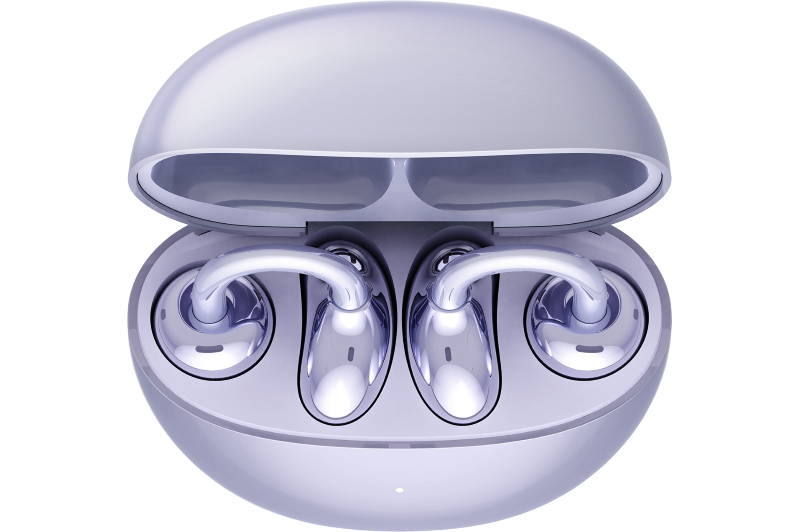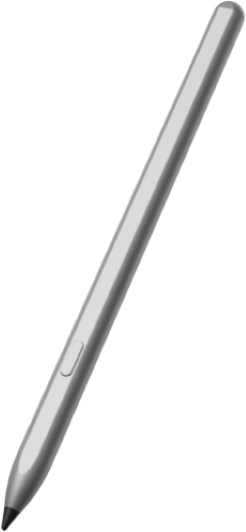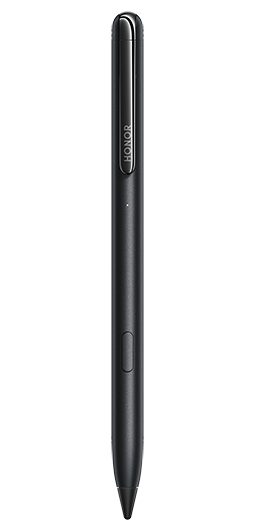TOP
Shop

我的荣耀 开启荣耀之旅
To log in to your account, you must first agree to the HONOR PLATFORM TERMS OF USE and HONOR Platform Privacy Statement . If you do not agree, you may only browse the site as a guest.
*You can unsubscribe at any time, Please see our Privacy Statement for details.

Why Is There a Line on My Laptop Screen? (With Solution)
Whether you’re crunching numbers for work, writing the next chapter of your novel, or streaming your favourite show, a clear and unblemished screen is essential. But when a line appears, it’s not just an inconvenience—it may be a sign that your device is malfunctioning.
You're not alone in pondering, "Why is there a line on my laptop screen?" Addressing this conundrum requires a structured strategy. In this comprehensive guide, we delve into the myriad reasons behind this screen dilemma. From straightforward solutions to tackle this visual intruder to delving into the technical depths of screen repair, we've got you covered.
Why Are There Lines on My Laptop Screen?
Understanding the root causes is the first step in troubleshooting and finding an effective solution to restore your screen's clarity and functionality. Let's delve into the common causes behind this issue, exploring both hardware and software culprits:
● Overheating or Physical Damage: Excessive heat or physical trauma to the monitor or connecting cables can lead to screen lines. Overheating in laptops can occur when the internal components generate excessive heat, often due to heavy usage or a lack of proper ventilation. This heat can affect the screen, causing lines to appear. Physical damage, such as drops or impacts, can also lead to lines on the screen. The damage might affect the LCD panel directly or disrupt the connection between the screen and the motherboard.
● Screen Resolution Conflicts: Screen resolution conflicts arise when the settings do not match the monitor’s native resolution, leading to lines on the display. This mismatch can be caused by incorrect manual settings or by software that changes the resolution without syncing with the hardware capabilities. Such conflicts can result in a distorted image, where lines may appear as the screen attempts to render the content.
● Refresh Rate Settings: The refresh rate of a laptop screen dictates how often the image is updated per second. Setting a refresh rate that is too high for the screen’s capabilities can cause lines to appear, as the display struggles to keep up with the rapid updates. Besides, a refresh rate that is too low may lead to screen flickering, which can also manifest as lines.
● Outdated Device Drivers: Drivers are essential for communication between the operating system and the hardware. If they are not up-to-date, the screen may not function properly, resulting in lines or other visual anomalies.
Understanding Different Lines on the Laptop Screen
Having learned about the common causes of lines appearing on laptop screens, we now delve deeper into a detailed breakdown. This section will guide you through the various types of lines you might encounter - from vertical and horizontal to flickering - and the specific reasons behind each:
● Single Black Line: A single black line on a laptop screen often indicates a malfunction in a specific row of pixels. This issue can arise from a defect in the screen’s matrix or a problem with the internal connections, such as a partially disconnected ribbon cable.
● Multiple Black Lines: When multiple black lines appear, it suggests a more serious condition, potentially pointing to widespread damage within the screen’s matrix or a significant malfunction in the graphics system.
● Static Lines: Static lines that stay in one place could be a symptom of connection issues between the screen and the graphics card or motherboard, indicating a need for a closer inspection of the internal hardware.
● Horizontal or Vertical Lines: Horizontal or vertical lines on a laptop screen can result from a range of factors, from driver conflicts and incorrect resolution settings to physical problems like a damaged display or faulty video cables.
● Intermittent Lines: Lines that come and go may be due to loose connections within the laptop, components overheating, or intermittent software glitches that affect the display.
● Flickering Lines: Flickering lines are often related to issues with the screen’s refresh rate, incompatible display drivers, or conflicts within the software that cause instability in how the display renders images.
These insights provide a more detailed understanding of the different types of lines you might encounter on a laptop screen, each hinting at various potential causes.
How to Fix Lines on the Laptop Screen?
Armed with a deeper understanding of the different types of lines that can appear on a laptop screen and their underlying causes, we now transition to practical solutions. In this section, we will explore a range of troubleshooting steps and repair techniques to help you effectively resolve the issue and restore your laptop screen to its optimal state.
1. Check Your Hardware
A computer monitor screen with horizontal or vertical lines can be fixed by checking the hardware equipment. Clean the screen gently with cotton balls, check for cracks on it, and have the ribbon cables checked by a technician. Make sure the monitors and cables are compatible with each other.
2. Adjust the Screen Resolution
To change the screen resolution, go to the display settings by clicking on an empty space on the desktop and then using a right click button. Select the recommended resolution in Resolution, under “drop down” menu. Next, restart your computer and check if the lines have disappeared.
3. Update Your Graphics Driver
This is the initial process of solving the lines on your laptop and updating your graphics driver. Such difficulty can also arise when you are utilising incompatible or obsolete graphics driver. To obtain the most recent driver, you should log onto that particular website of your PC’s graphics card manufacturer and access either ‘download’, or ‘support’. Restart your PC after installing the driver and verify that the lines are no longer on your screen.
You can even try updating your Windows to fix the lines on your laptop's screen if updating your graphics driver does not work.
4. Connect to an External Monitor
Connecting the laptop to an external monitor will guide whether the problem lies on the laptop’s own screen or something else. If the lines display externally; this means there could be a problem with the graphics card and some other interior parts. If there are no lines in the external monitor then the issue might be related to the laptop’s screen.
In summary, resolving lines on your laptop screen can range from simple adjustments to more complex repairs. For those seeking a more permanent solution to screen issues, consider the HONOR MagicBook 15. This laptop is engineered to minimize such problems, thanks to its AMD Ryzen 5000 Series CPU, which ensures smooth performance. The Eye Comfort FullView Display, boasting a 100% Srgb High Colour Gamut and 300 nits of brightness, offers a stunning visual experience. Additionally, its triple-screen collaboration capabilities and long battery life make it an outstanding choice for both professional and leisure use.
Conclusion
Lines appearing on your laptop screen can be a common issue that many users face. The reasons for these lines can vary from hardware issues to software glitches. However, the good news is that there are several troubleshooting steps and solutions available to fix this problem. By following the methods outlined in this blog post, you should be able to effectively address the question of “Why is there a line on my laptop screen” and restore your laptop screen to its normal state.
FAQ
Why is there a black line on my laptop screen?
Black lines on your laptop screen can be caused by a variety of issues, ranging from hardware problems to software glitches. It could be due to a faulty display panel, loose video cable connections, or damage to the screen itself. If the line is persistent across system reboots and visible on the BIOS or UEFI screen, it’s likely a hardware issue.
Why is there a faint line on my laptop screen?
Faint lines, often less noticeable than black lines, can be the result of minor software issues or beginning signs of hardware failure. Adjusting the display settings or updating the graphics driver might resolve the issue. However, if the line remains, it could indicate a failing display panel or graphics card.
What causes vertical lines on LCD display?
Vertical lines on an LCD display are typically caused by hardware malfunctions. This can include problems with the LCD panel, such as dead pixels or damaged liquid crystals, faulty ribbon cables, or issues with the graphics card. In some cases, gently pressing around the edges of the screen can temporarily fix the lines, indicating a loose connection.
Source: HONOR Club
Subscribe For Updates - Special Offers And More.
I agree to receive the latest offers and information on HONOR products through email or IM (e.g. WhatsApp) provided below and advertisement on third-party platforms. I understand that I can unsubscribe anytime according to Chapter 6 of HONOR Platform Privacy Statement .
Consumer hotline

8008440443 Sunday - Saturday, 9:00am-9:00pm
sa.support@honor.com
Copyright © HONOR 2017-2025.All rights reserved.
We use cookies and similar technologies to make our website work efficiently, as well as to analyze our website traffic and for advertising purposes.
By clicking on "Accept all cookies" you allow the storage of cookies on your device. For more information, take a look at our Cookie Policy.
Functional cookies are used to improve functionality and personalization, such as when playing videos or during live chats.
Analytical cookies provide information on how this site is used. This improves the user experience. The data collected is aggregated and made anonymous.
Advertising cookies provide information about user interactions with HONOR content. This helps us better understand the effectiveness of the content of our emails and our website.


































































